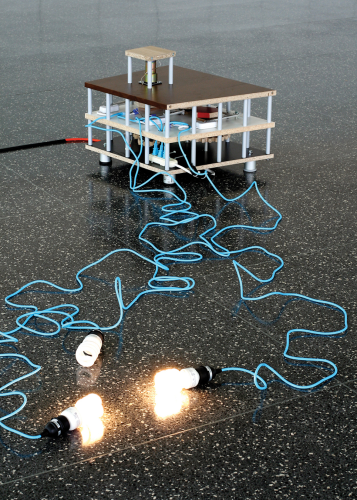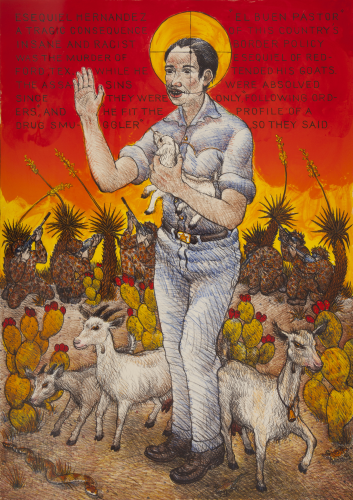Jul 02, 2014
Museum exhibitions to feature Chicago architecture, illustrate political expression
Museum exhibitions to feature Chicago architecture, illustrate political expression
CHICAGO —DePaul Art Museum will feature a selection of works from the museum's permanent collection, as well as sculptures in the form of architectural models based roughly on former Chicago structures in two exhibitions opening July 10.
“Fires Will Burn”: Politically Engaged Art from the Permanent Collection
July 10 – Dec. 21
Drawing on DePaul’s own collection, this exhibition surveys a wide range of political expression, touching on racial prejudice, immigration issues and opposition to war. It includes Diego Rivera’s painting of the Mexican Revolution; John Wilson’s searing “Down by the Riverside,” a suite of etchings about slavery; and Gerda Meyer Bernstein’s powerful installation of “The Justice Chair.” Also included in this exhibition is a seldom-seen portfolio of prints by Chicago artists protesting the Vietnam War. Although the works vary widely in subject, scale and medium, the artists share the conviction that visual images can help to bring about social change.
“We are always excited when we can create an exhibition out of our own collection; in this case we have acquired some great things recently, through gift and purchase,” said Louise Lincoln, director of the DePaul Art Museum.
“The Common Citizenship of Forms”: New Sculpture by Jeff Carter
July 10 – Aug. 31
Using ready-to-assemble components from the global home-furnishings store Ikea, Jeff Carter repurposes them into architectural models that are simultaneously familiar and a bit different. Carter is a professor in the department of Art Media and Design at DePaul's College of Liberal Arts and Social Sciences. His constructions replicate buildings from the now-demolished Michael Reese Hospital campus on the South Side of Chicago, exploring the formal vocabulary of Bauhaus architecture while also considering the dilemma of modern material culture: Can mass-produced consumer goods be “good” design? Which is more socially useful: inexpensive products to buy or artisanal production and jobs?
“It is a great group of objects related to Chicago's architectural history while simultaneously commenting on the current issue of consumerism,” said Lincoln, who brought Carter's sculpture to the museum because it addresses important societal questions and also has a fun interactive component.
"Guests will be surprised and intrigued, not only to see familiar objects used in a creative way, but also for the way the pieces suggest their history and purpose. It's a pleasure to show faculty work and these pieces are smart, accessible and have a point to make," she said.
The DePaul Art Museum at 935 W. Fullerton, just east of the CTA’s Fullerton ‘L’ stop, is open this summer on Wednesday and Thursday from 11 a.m. to 7 p.m., Friday from 11 a.m. to 5 p.m., and Saturday and Sunday from noon to 5 p.m. It will be closed Monday and Tuesday. For more information, call 773-325-7506 or visit http://museums.depaul.edu.
###

Using modified IKEA products, the Linear Accelerator by Jeff Carter was built using an electric motor and light fixtures. The sculpture exhibition is one of two shows coming to the DePaul Art Museum July 10. (Image courtesy of Jeff Carter)

Luis Jimenez's "El Buen Pastor" is a color lithograph which is part of the DePaul Art Museum's permanent collection. The exhibition will be on display July 10 and run through Dec. 21. (Image courtesy of the DePaul Art Museum)
